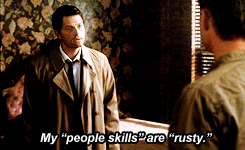Earlier this year I applied for the Graduate Preprofessional Library position at Catholic University of America. Essentially, it's a program that pays for six credits per semester as well as gives me a two-year position at the library on campus. So it's tuition + experience, and there's a stipend as well. The program is incredibly competitive, and while I thought that I had a decent shot, I in no way expected it to be offered to me.
Tuesday morning I received an email from Shanyun Zhang (who you'll remember I interviewed last year about her department), saying she was interested in my application and wanted to meet with me. Seeing her name was something similar to an angelic chorus. I remembered her well, her sense of humor and her unrelenting kindness when I spoke with her last year. Apparently she remembered me, too, and after talking briefly in her office later that afternoon I was offered the position within her department, which I accepted without hesitation.
AND SO on August 19th I will begin working at Catholic University of America's Mullen Library in their electronic resources department! This includes working on the web site, some digitization, learning more about the vendors and other lovely things like LibGuides! As an added bonus I will be able to do some projects with the humanities and religion librarian, Kevin Gunn, who shares my interest in the digital humanities and fringe library weirdness. To say that this position is all I ever wanted would be a gross understatement. I'm incredibly excited to kick off my graduate school experience with these opportunities.
















